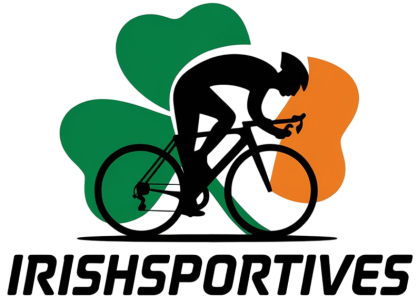Tip 3: Think To Drink by Catriona Courtney M.Sc B.Sc.Hons
Cycling training sessions are usually long. Progressive dehydration and loss of electrolytes, such as potassium, magnesium, calcium or sodium, may occur.
Hydration before, during and after a sportive event will impact on cardiovascular, thermoregulatory, metabolic and central nervous system functions and cycling performance has been impaired by dehydration by even 8%.
As we get older, maximum cardiac output and stroke volume tend to decrease, and therefore optimal hydration status is even more critical. Also our thirst sensation changes as we age. You may have heavy sweating during warm weather conditions, you may have extra stress to complete the course by a certain time, or gut discomfort or you may just forget about drinking and your thirst response is dampened. Having a plan for these situations is a good idea and practice and refine based on course and weather.

There is some debate as to the best approach to hydration – do you follow a plan or drink to thirst? What is known for sure is that dehydration does eventually impact performance and over drinking and low blood sodium can lead to a condition called hyponatraemia.
Ensuring you enter long training sessions or an event where temperatures will be higher well hydrated is a good starting point. Aiming for 6ml/kg every 2-3 hours prior to event lead up this could be 2-3 days prior.
During this phase of training, periodically testing your sweat rate can help you devise an outline of what to consume for an event. Do this over a range of cycles and at the pace you plan to complete your sportive. As the weather gets warmer, follow up with some additional sweat-rate testing. From this you will get a sweat rate specific to you, under the conditions tested.
A recent systematic review of nine research studies outlined the following very specific guidelines and relationship with performance. When cycling at moderate intensity for >1 to ≤2 h, cyclists should expect a gain in performance of at least 2% if fluid is consumed at a rate of 0.15-0.20 mL/kg body mass/min. For cycling exercise >2 h conducted at moderate intensity, consuming fluid ad libitum or at a rate of 0.14-0.27 mL/kg body mass/min should improve performance by at least 3%.
Athletes can have huge variations in sodium losses and can in some cases have up to 10-fold difference in sodium losses.
On cycles that exceed four hours, or during acclimatisation periods in hot weather, adding modest amounts of salt (0.3 – 0.7 g/L) may offset electrolyte imbalance. Testing your sodium losses is a once off test and maybe a worthwhile investment if you want a more information on how to best address your own individual sodium losses
These are starting guidelines. It’s all about getting your practices in place and adjusting, also perfecting bike-handling techniques, terrain and intake right, and how practical it is for you to consume at any point.
Tip #4

Catriona Courtney is a Registered Sports and Exercise Nutritionist(SENr Graduate Member) and lives near Kinsale in Cork (but still very proud of her Kerry upbringing😉). Catriona specializes in nutrition for endurance sports like cycling, running, triathlon and ultra endurance. For information on her services, contact her through her website www.elev8nutrition.ie or follow her on Facebook @elev8nutrition.ie and Instagram @elev8nutritionirl

